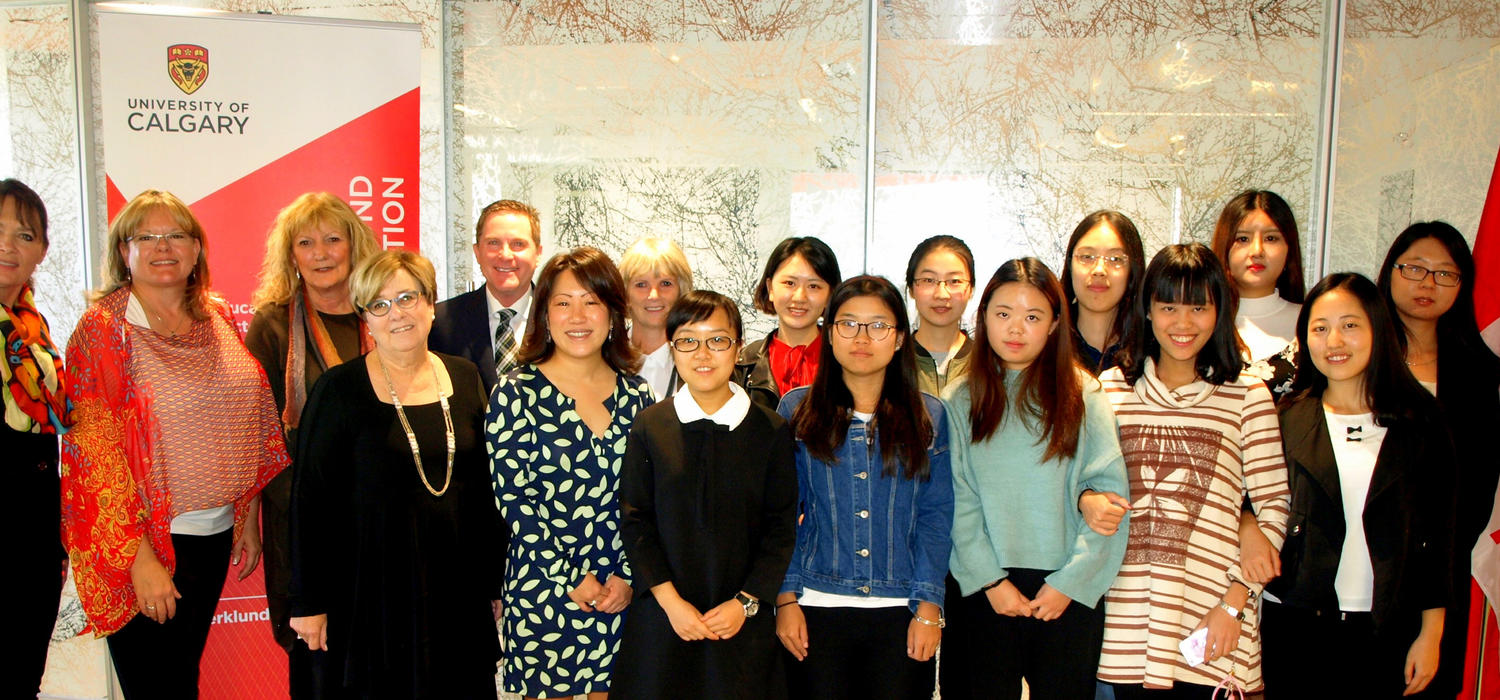Nov. 17, 2016
Shaanxi student teachers bring expertise to Colonel Irvine school

In Calgary, the number of schools that offer education in more than one language is growing.
Between the public, separate, private and charter schools in Calgary, an increasing number of languages are taught, and the offerings for students range from to introductory classes on language and culture to bilingual and immersion programs.
Undergraduate students in the Werklund School of Education with capabilities in second (or even third or fourth) languages are often placed in practicum settings where they can put their additional skills to work.
But it’s not very often that the School is able to offer up native speakers of languages who reside in their birth countries—who don’t live in Canada, but are here for an educational and cultural exchange.
Recently, ten undergraduate students from China’s Shaanxi Normal University (SNNU) teacher education program came to UCalgary for a six week visit. While here, they learned about Canadian culture and had the opportunity to experience Canadian classrooms; they, in turn, shared some of their culture with the teachers and students in Calgary schools.
Taking teacher exchange to new levels
“A collaborative venture through the Offices of Internationalization and Graduate Programs in Education in the Werklund School, this program included two weeks of on-campus seminars, focusing on teaching and learning in the province of Alberta,” explains Colleen Kawalilak, associate dean Internationalization in the Werklund School. “Students then engaged in four weeks of participation and observation in Chinese Mandarin Immersion Elementary and Junior High Schools within the Calgary Board of Education (CBE).”
Some of the Shaanxi students were sent to Colonel Irvine Middle School, where they worked with teacher Angela Chen, who is the Learning Leader for the school’s Chinese Mandarin Bilingual Program. “Before this, we have only had student teachers from Canada,” she says. “They (the Chinese student teachers) have been great, and they’ve given me a lot of help.”
“The wonderful thing is that they bring in first hand cultural information and resources and experiences. Yesterday, for example they gave two presentations—one was on the differing lifestyles between Canada and China, and in the other they led a discussion on the similarities and differences between Christmas and Chinese New Year.”
“The teachers are nice and the students are kind, and curious,” says Cindy Xia Jing, one of the Shaanxi students.
And she says that while there are some similarities in the two school systems, some of the differences stand out.
“Here in Canada there are some very different programs,” she says. “There are different classes, like construction, and cooking. It’s really interesting and seldom will you find something like this in China.”
Jing also laughs as she laments another big difference: the break times between classes. “In China we usually have around ten minutes to get from class to class. Here, break time is just two minutes.”
“We have to hurry a lot.”
Educational, cultural learnings go both ways
The Colonel Irvine students have enjoyed having the Chinese student teachers in their classroom too. And they say they are surprised at some of the differences they’ve learned about.
As the noon bell rings in the background, Evany Logue brings up the timing of classes too, but she is more surprised by the length of the lunch breaks in Chinese schools. “They get two or two and a half hours for lunch.”
“I’m not sure what they do then, but they have to stay for two or three hours later than we do.”
“I don’t think I’d like that.”
“And,” says Owen Song, “they often have to go to night classes.”
Having the Chinese students in their class has been a big plus, says Owen. “When we need some help, they always have the time.”
“And,” continues Ashlyn Haines, “they’re really good at helping with our Chinese when we get stuck.”
“They even made us flash cards.”
According to Evany, perhaps most importantly—and all the students agree on this—“we’ve learned about the differences and similarities between our two cultures.”
“It was such a thrill to welcome this first cohort of SNNU students who came to the University of Calgary to extend their learning and development as classroom teachers in the Werklund School of Education, says Michele Jacobsen, associate dean of graduate programs. “We are grateful to our partners in the CBE for opening their classrooms and sharing their expertise with our SNNU students.”
“We learned as much as the students about the ways in which our education goals and aspirations for children are similar and how we are strong in our cultural diversity. When we said goodbye to the students at the end of October, our hearts were full and there were a few happy tears as the ten students sang a beautiful anthem in tribute to all of their teachers.”
